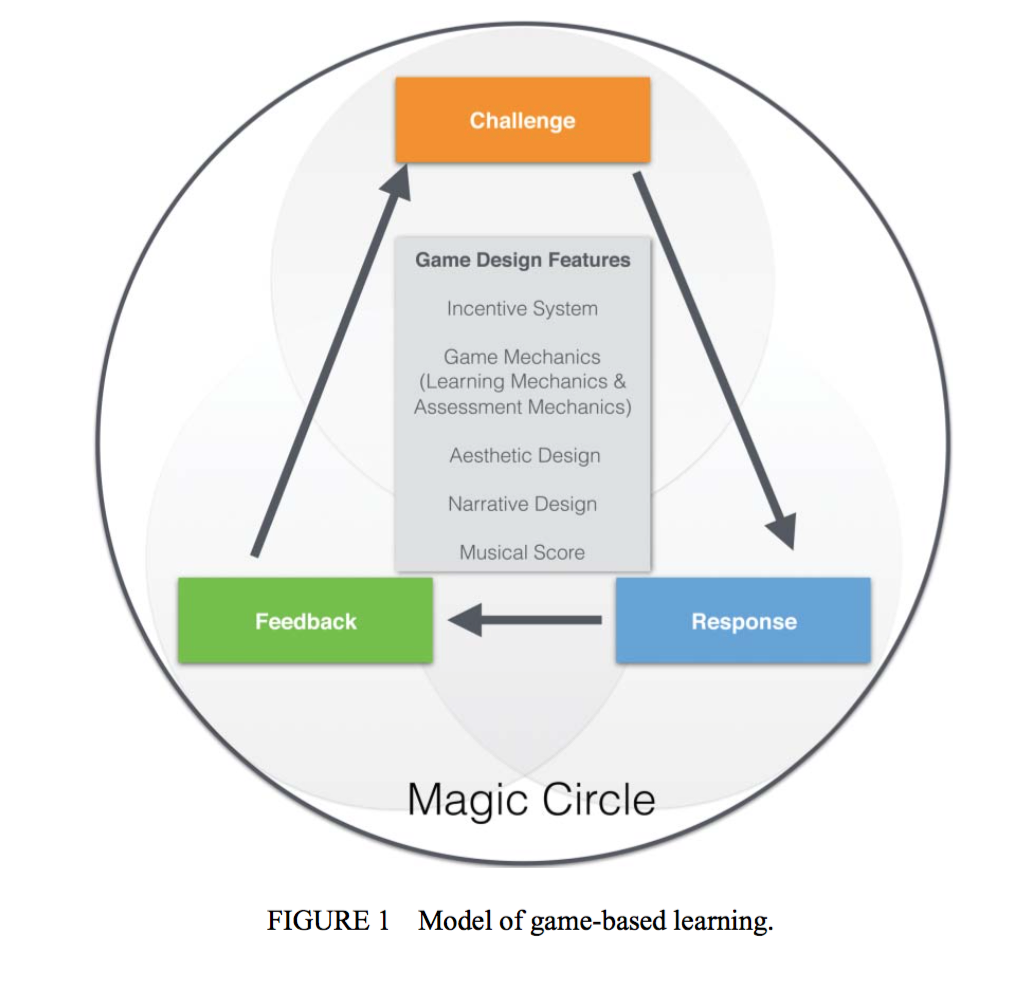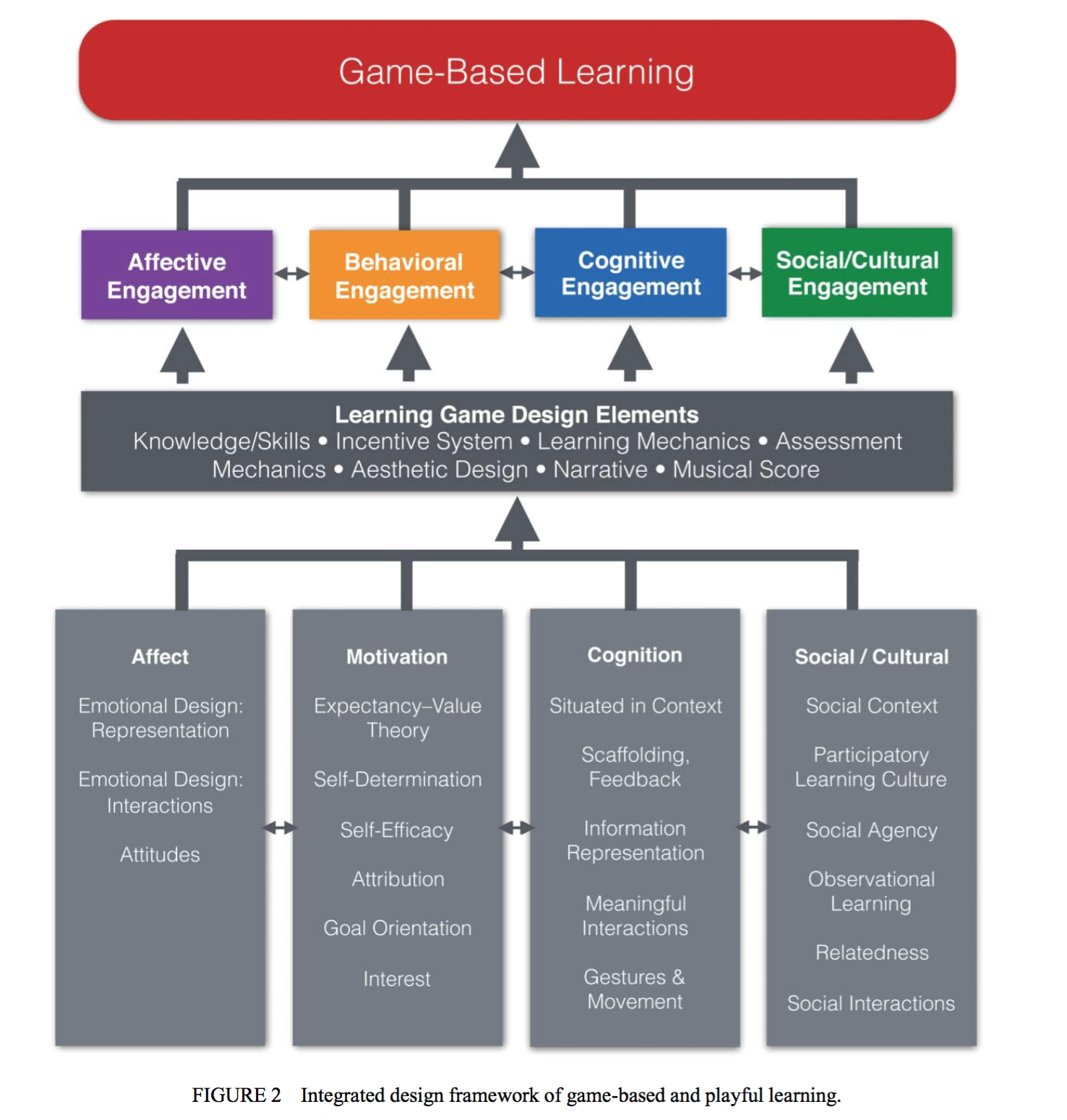Went to a guided visit of Berkley’s Robotic Learning Lab yesterday. What a beautiful campus and great work they are doing in the field… fascinating.
Daily Archives: April 30, 2016
Engineering Education – Week 5.2 – Class Notes

Great class today with guest speaker – NYU professor Jan L. Plass – the author of this week’s reading on the foundations of Game-Based Learning.
The biggest takeaway was the distinction between a game-based learning experience vs. gamification. Gamification is a “buzz word” that people love to use or think of as a way to engage their users, to make their product more appealing, or effective. In reality, it’s a simple way of adding game-based features such as points, badges, or reward systems…
Engineering Education – Week 5.2 – Reading Notes
Reading:
Jan L. Plass, Bruce D. Homer & Charles K. Kinzer (2015) Foundations of Game-Based Learning, Educational Psychologist, 50:4, 258-283
Summary:
I highly appreciated the reading in the sense that it does not claim to have found a holistic and generalizable theory or framework for game-based learning. It comprehensively analyzes the several aspects or considerations one takes (or should take) into account when designing a game-based learning experience, and concludes that no single approach is the most effective or essential. It also states that when designing, one can use several learning theories and several game design aspects to enhance the experience.
“In this article we argued that the integrated viewpoints of cognitive, motivational, affective, and sociocultural perspectives are necessary for both game design and game research in order to fully capture what games have to offer for learning.” (Plass et al, 2015)
I particularly enjoyed the definition of gamification which reduces it to a gimmicky buzz-word. Like most buzz-words, it is over and incorrectly utilized – with the best intentions of course – but creating a false sense that any process or interaction can be magically transformed into a game and thus increase customer satisfaction, retention, or engagement.
“What exactly is meant by gamification varies widely, but one of its defining qualities is that it involves the use of game elements, such as incentive systems, to motivate players to engage in a task they otherwise would not find attractive.” (Plass et al, 2015)
“Consider as an example the gamification of math homework, which may involve giving learners points and stars for the completion of existing activities that they con- sider boring. Game-based learning of the same math topic, on the other hand, even though it may also include points and stars, would involve redesigning the homework activi- ties, using artificial conflict and rules of play, to make them more interesting and engaging.” (Plass et al, 2015)
Notes:
- Game-based learning
- Type of game with defined learning outcomes
- Play and cognitive development
- Piaget and Vygotsky already stated that play is integral to children’s cognitive development
- The arguments
- Motivation
- Player engagement
- Adaptivity
- Graceful failure
- Model of Game Based Learning
- Games do not use a single theory, but a combination of a few

- Elements of Game Design for Learning
- Game Mechanics
- Visual Aesthetic Design
- Narrative Design
- Incentive System
- Musical Score
- Content and Skills
- Preparation of future learning
- Teach new knowledge and skill
- Practice and reinforce existing knowledge and skills
- Develop 21st century skills

- Cognitive Foundations of Game-Based Learning
- Situatedness
- Transfer of learning
- Scaffolding and relevant feedback
- Dynamic assessment
- Information design: representation of information
- Interaction design: learning mechanics
- Gestures and Movement
- Motivational Foundation of Game-Based Learning
- Intrinsic motivation
- Values and interests
- Achievement-related goals
- Affective Foundation of Game-Based Learning
- Emotional design
- Anything in the game that will provoke emotions: design elements, sounds, storylines, and so on…
- “Research also shows that affective tutors that respond to players’ emotions can enhance learning. However, it still needs to be investigated what kinds of emotions best facilitate learning in general, and what kinds of emotions learners experience over time will optimize their emotional engagement and, as a result, their cognitive engagement.”
- Emotional design
- Sociocultural Foundation of Game-Based Learning
- Very hard to relate social and cultural factors in design with learning outcomes as they are an integral part of the creation process and its subsequent use.
- “The goal of learning designs that focus on social and cultural aspects of learning relate to how learners can participate in groups, use collective knowledge to meet goals, relate learning to aspects of cultural norms and identities, and use social and cultural influences as motivators for learning through features that are contained within immediate and more distributed game play.”
- Activity Theory
- Social Context of Learning
- Participatory Learning Culture
- Social Aspects of Agency
- Observational Learning
- Relatedness and Self Perception
- Social Interaction Design
- “In much the same way as was discussed in the sections relating to affect and motivation, however, although we know that sociocultural factors influence learning, establishing sociocultural design patterns that directly relate to learning across a broad range of games may not yet be possible.”
- Very hard to relate social and cultural factors in design with learning outcomes as they are an integral part of the creation process and its subsequent use.
LDT Seminar – Week 5 – Class Notes
Not much progress on my Master’s project (LXD) but starting to talk more about a new idea James Leo and I had – a staffing agency combined with a bootcamp and mentorship for high-school students. Could be an interesting initiative.
At the moment I feel my project is more of a ‘nice-to-have’ performance tool that would have little impact in the world, expect for the few times it might be used by instructors… starting to feel like its purpose is dwindling… let’s see how this all pans out.